Over the last few years, Romelu Lukaku has been somewhat of a polarising figure in men’s football. In the last several years, it has been clear that Lukaku has been able to find the form that had slightly evaded him at Manchester United, with Lukaku playing a crucial role in Internazionale‘s Scudetto win in 2020/21, leading the side in goals scored and winning the league’s MVP. After his performances that season, Lukaku would move back to Chelsea for a record fee.
However, Lukaku would later publicly voice his displeasure over the way he had been utilised by Thomas Tuchel. A year and a half later, after a relatively successful loan spell at Inter, another loan from Chelsea to the Serie A has been completed, with Lukaku signing for Jose Mourinho’s Roma.
This scout report and analysis will examine the key characteristics of Romelu Lukaku‘s style of play, looking at some misconceptions about the player and how he will fit in with Mourinho’s tactics.
Romelu Lukau: A general overview
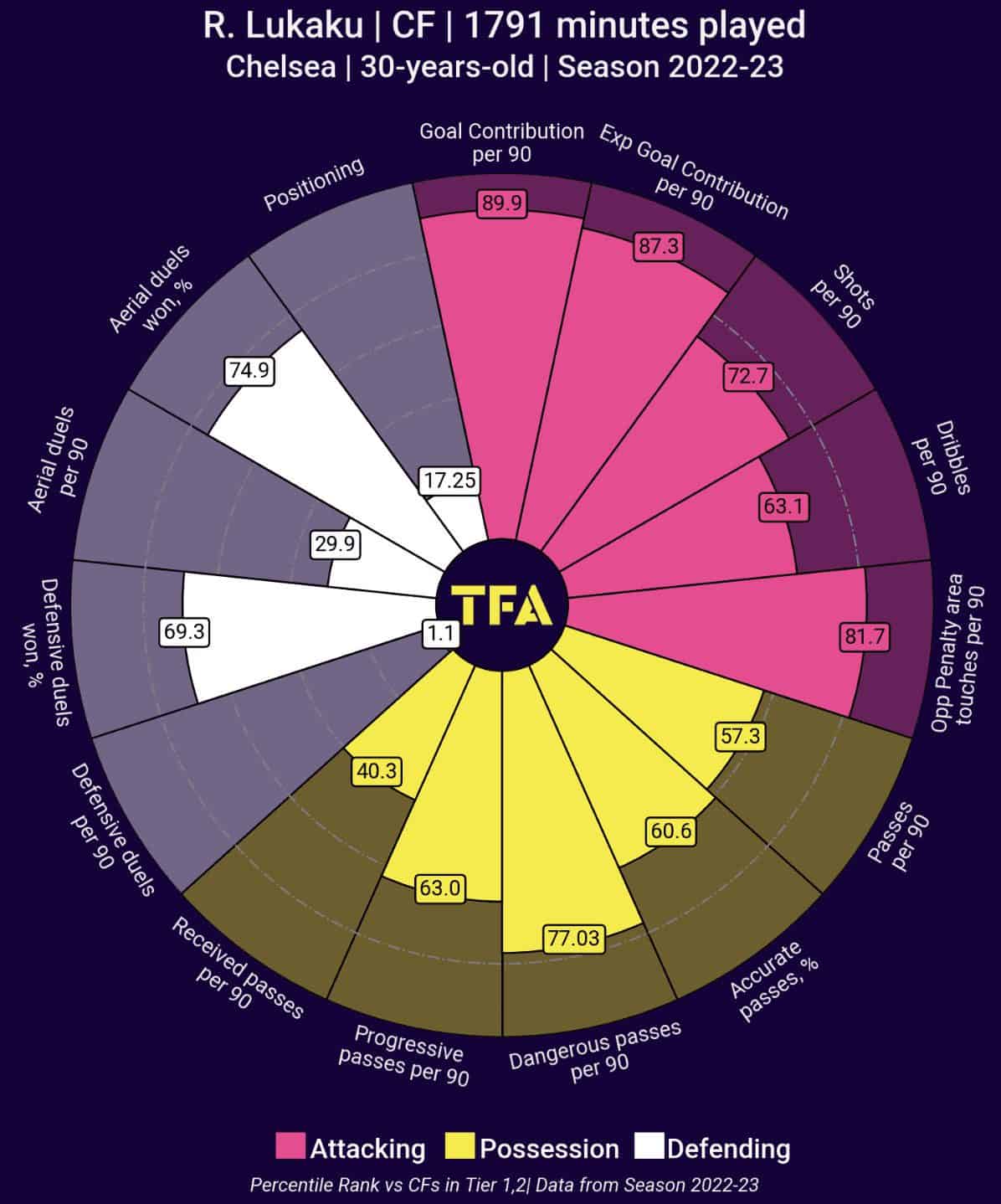
An aspect of Lukaku’s General Radar that stands out is that he is in the 75th percentile of the percentage of aerial duels won but only in the 30th percentile of aerial duels per 90. Although standing at 193 centimetres and having a physically imposing frame over the last four years, managers have resisted the temptation to play long balls to Lukaku regularly, especially at inter. Conte, in particular, looked to develop Lukaku’s ability to receive the ball at feet with his back to goal, focusing less on developing a system that would require Lukaku to play knockdowns and flick-ons.
However, as seen by the other metrics on the radar, many more aspects of Lukaku’s game are incredibly polished. Although he is in the 40th percentile for passes received per 90, Lukaku ranks in the 93rd percentile for progressive passes received per 90 with 8.67. In addition, he ranks in the 77th percentile for dangerous passes per 90, making two key passes a game and 4.33 shot-creating actions per game. In addition, he is comfortably in the 80th percentile for both expected goals per 90 and goal contributions per 90.
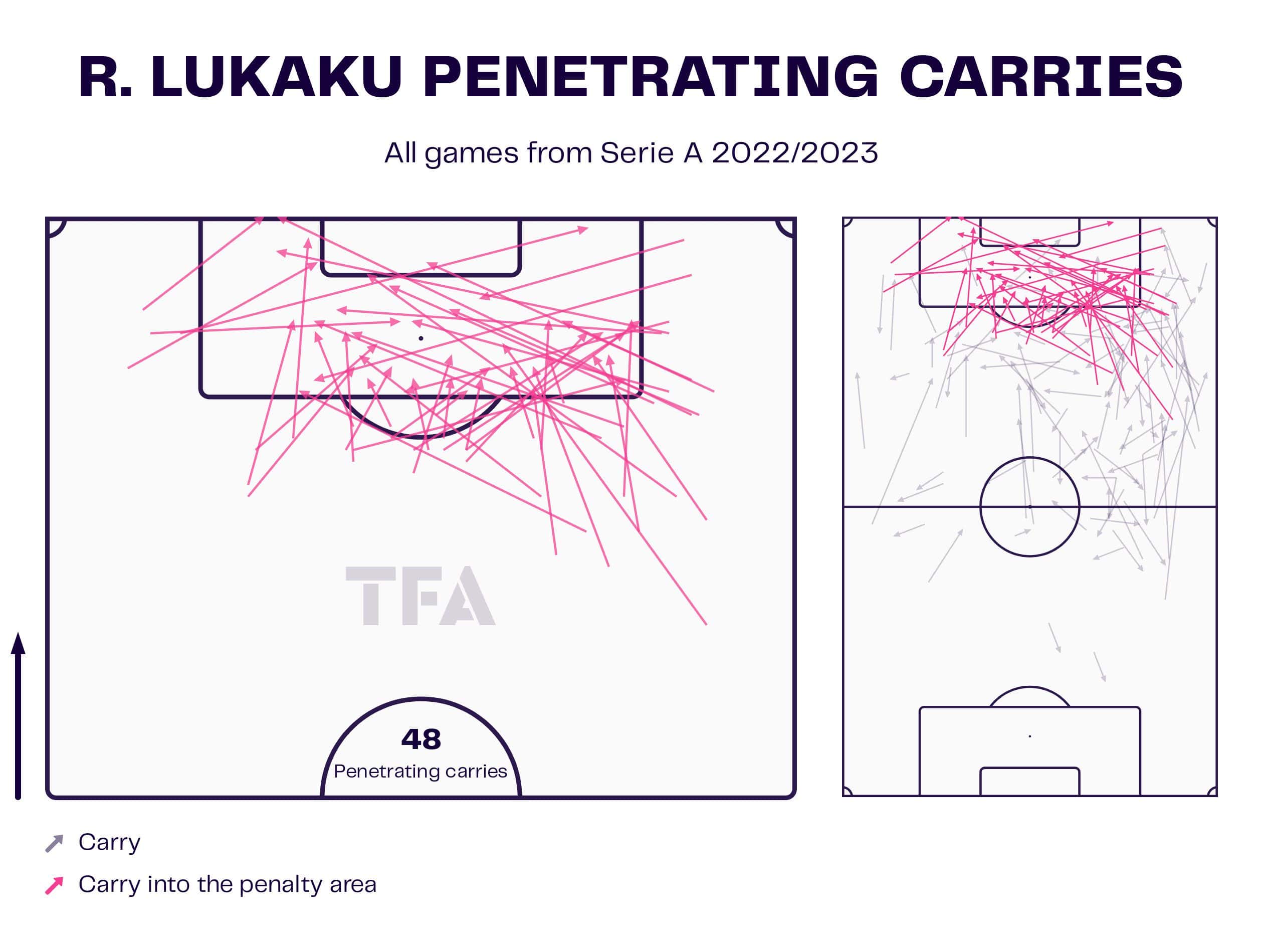
Another aspect of Lukaku’s game that he has genuinely honed is his ability to carry the ball into the box. From the diagram above, we can also start to see that Lukaku receives the ball predominantly on the right-hand side and, from there, looks to cut in and drive at the defence. As a result, Lukaku can consistently carry the ball into the opposition penalty area.
Movement
Regarding movement, Romelu Lukaku’s experience as a striker at the top level for a decade clearly shows with Lukaku able to recognise and exploit gaps between the opposition, as seen below. Lukaku, for the last several years, has been particularly effective at running into channels, chasing passes on the ground or carrying the ball himself whilst holding off defenders and running into dangerous spaces. Lukaku can create separation from his marker using double movements as well as changes in speed.
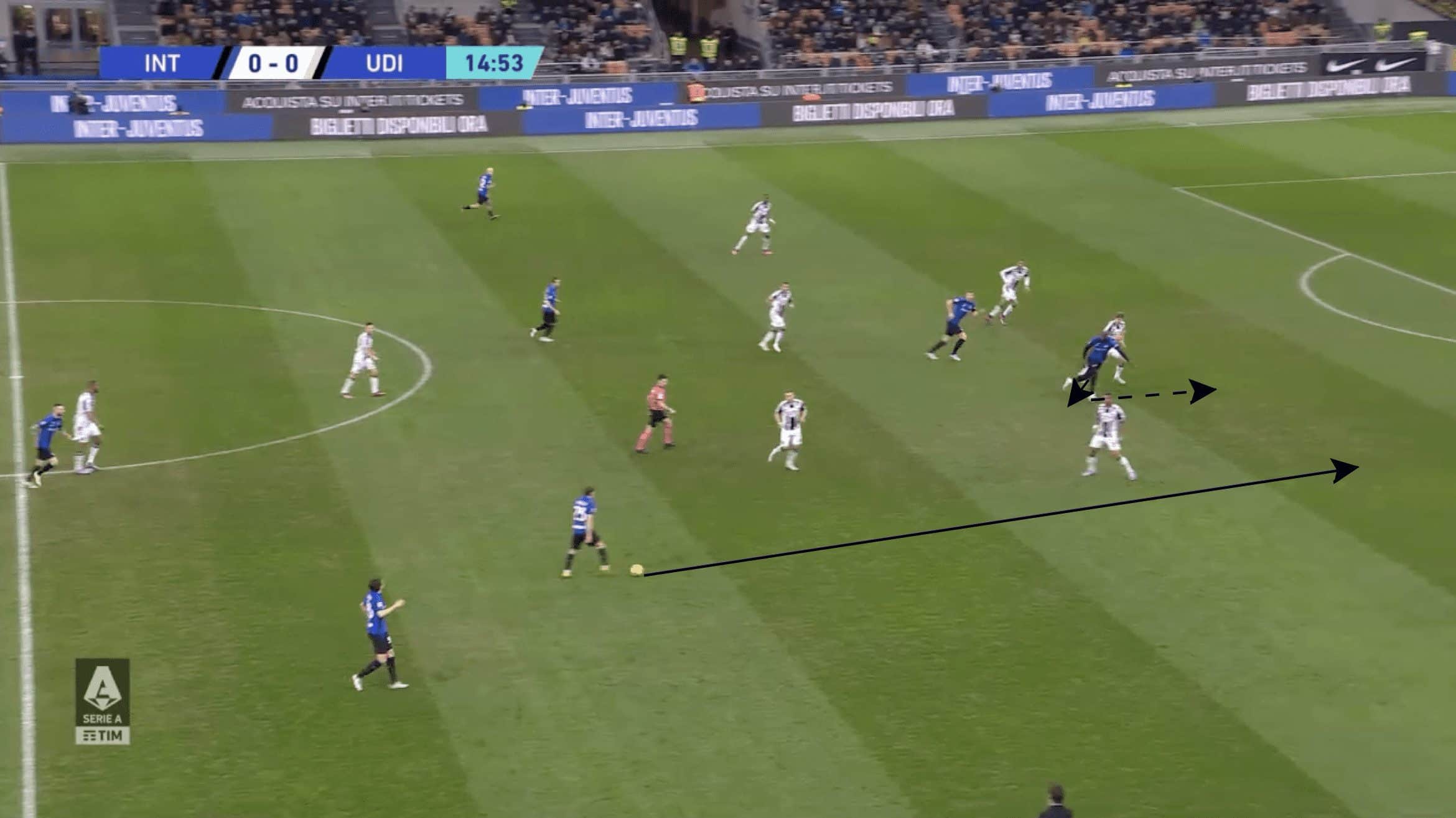
Lukaku has also shown himself to be particularly strong on the right-hand side, in situations where he can drive forward with the ball into space, either in a 1v1 against players in the backline or on the shoulder of one of the defenders in the back line. This can be seen in the image below.
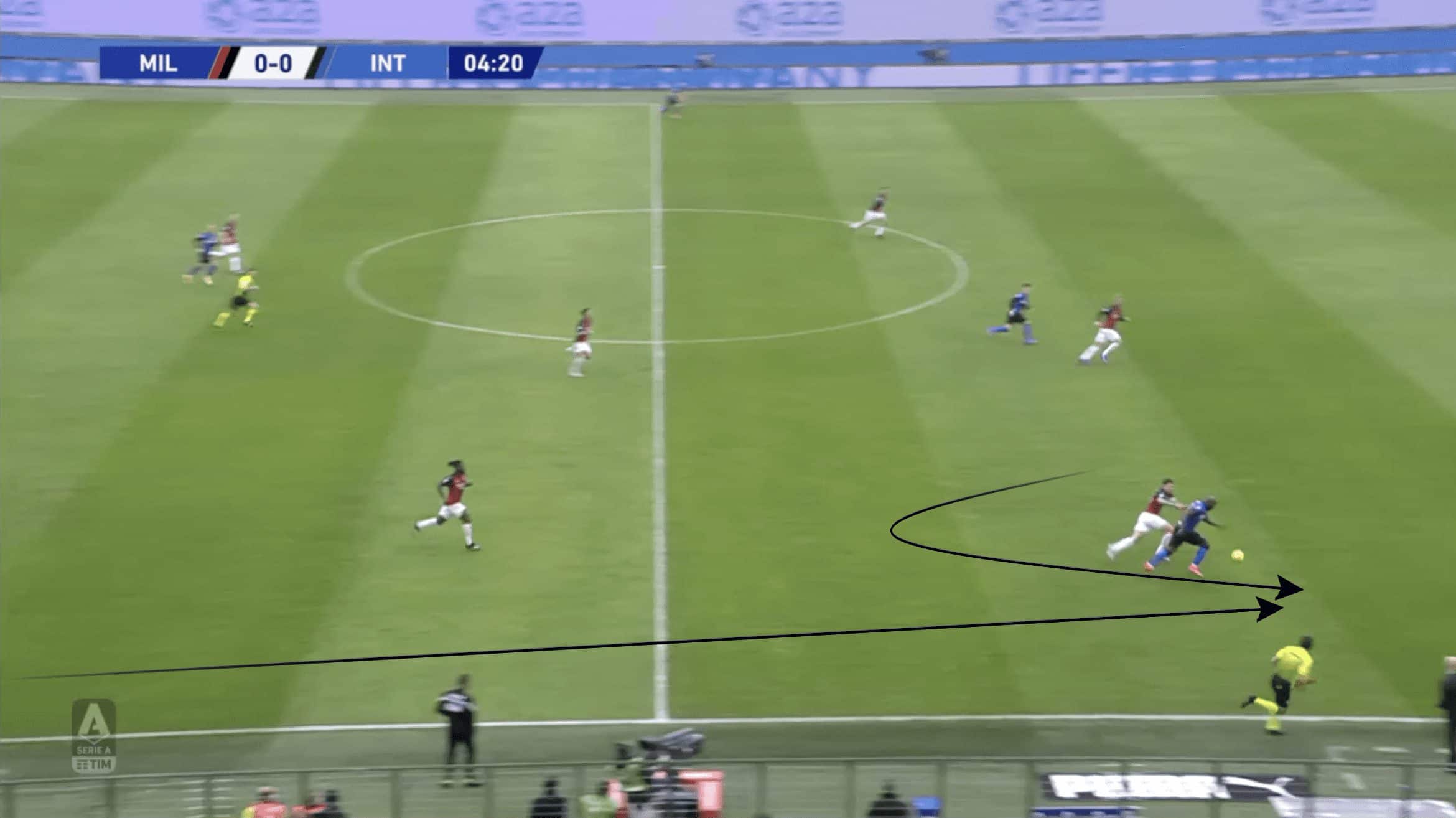
First touch and hold-up play
It is without a doubt that Lukaku’s physical strength is one of his most significant advantages, as well as his size and speed. However, it would be a disservice to the player to act as if these are the only elements of his game that stand out.
A common misconception surrounding Lukaku is that his first touch is poor and that passes to the striker lead to a reduction in the pace of attack. However, what has been apparent in the last four years is that Lukaku’s touch, as well as his hold-up play, have developed exponentially.
For both Conte and Inzaghi, Lukaku has drifted across the opposition backline, using his strength to hold off the opposition defender behind him and lowering his stance slightly, which gives him a greater base of support. This can be seen in the image below, with Lukaku able to utilise his strength to hold off his defender before being able to back up his opponent as well.
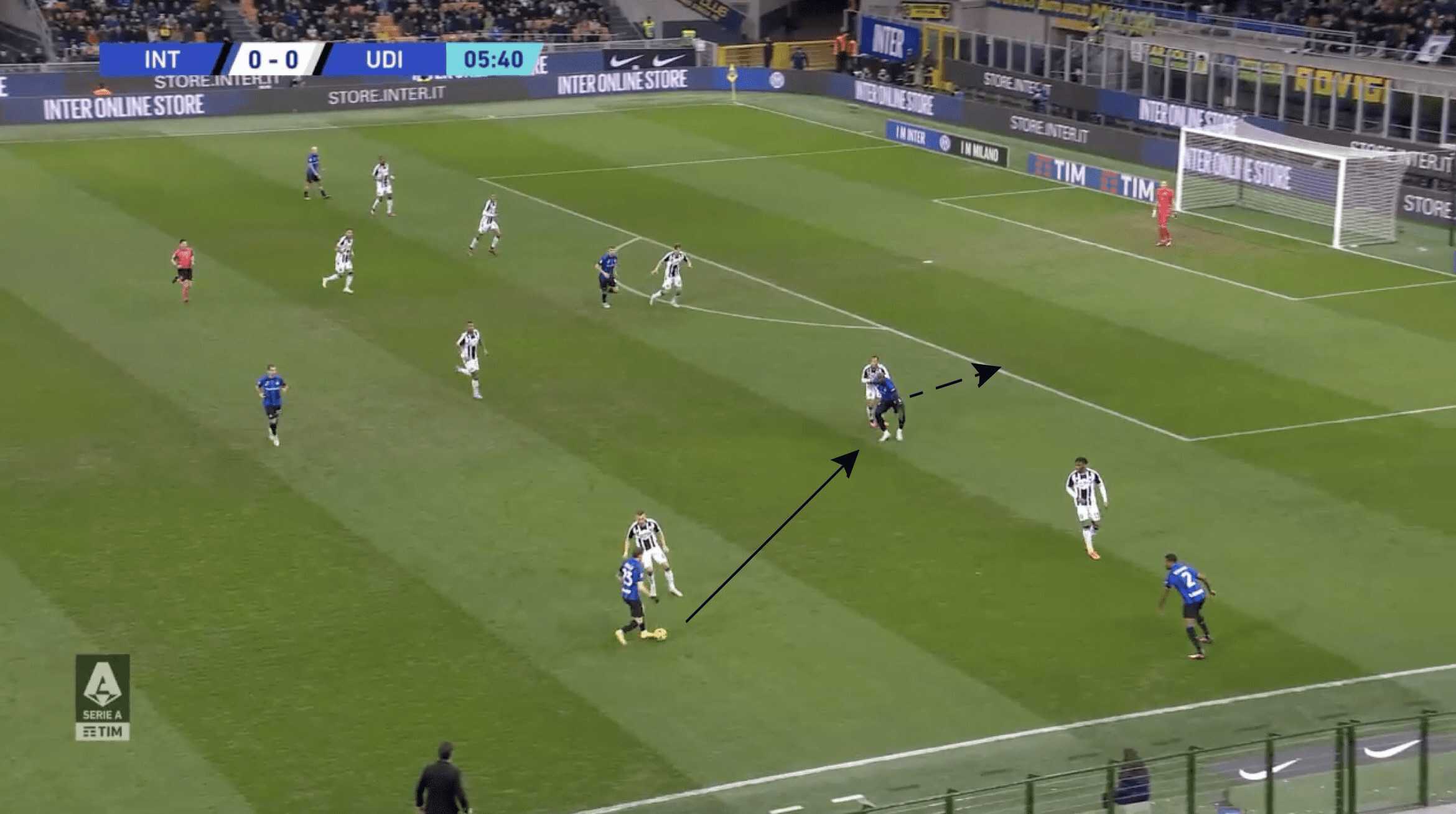
With this method of receiving the ball, Lukaku can easily control passes from different distances. This can be seen in the image below, with goalkeeper André Onana playing a pass to Lukaku. Lukaku can then keep possession either to lay it off or wait until his teammates are close enough to provide passing options.
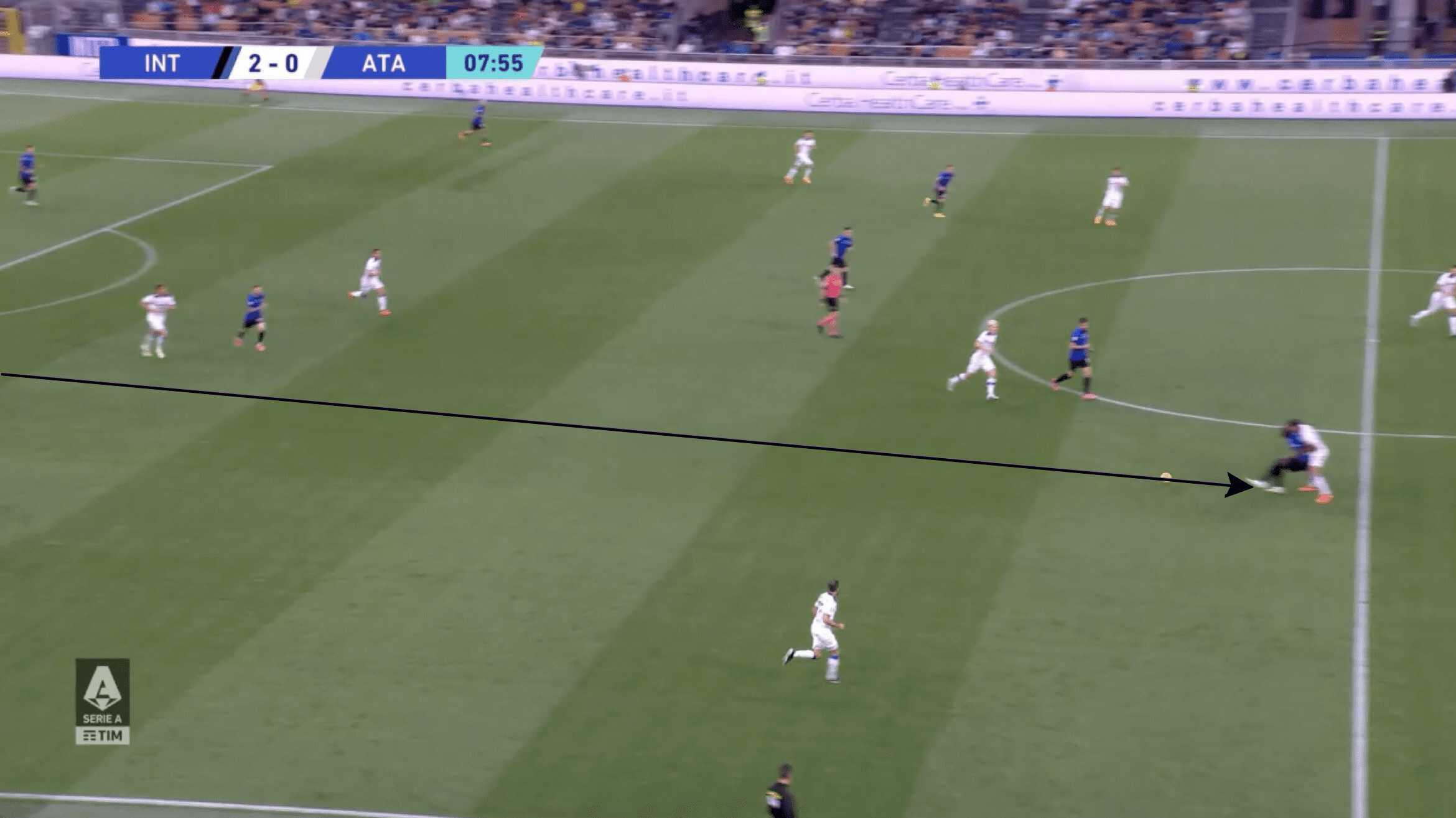
As a result, Lukaku’s game has moved even further away from looking to just operate in the box. At times, he will give up opportunities to make small darts into the box to get into positions where he can hold up defenders and bring others into play.
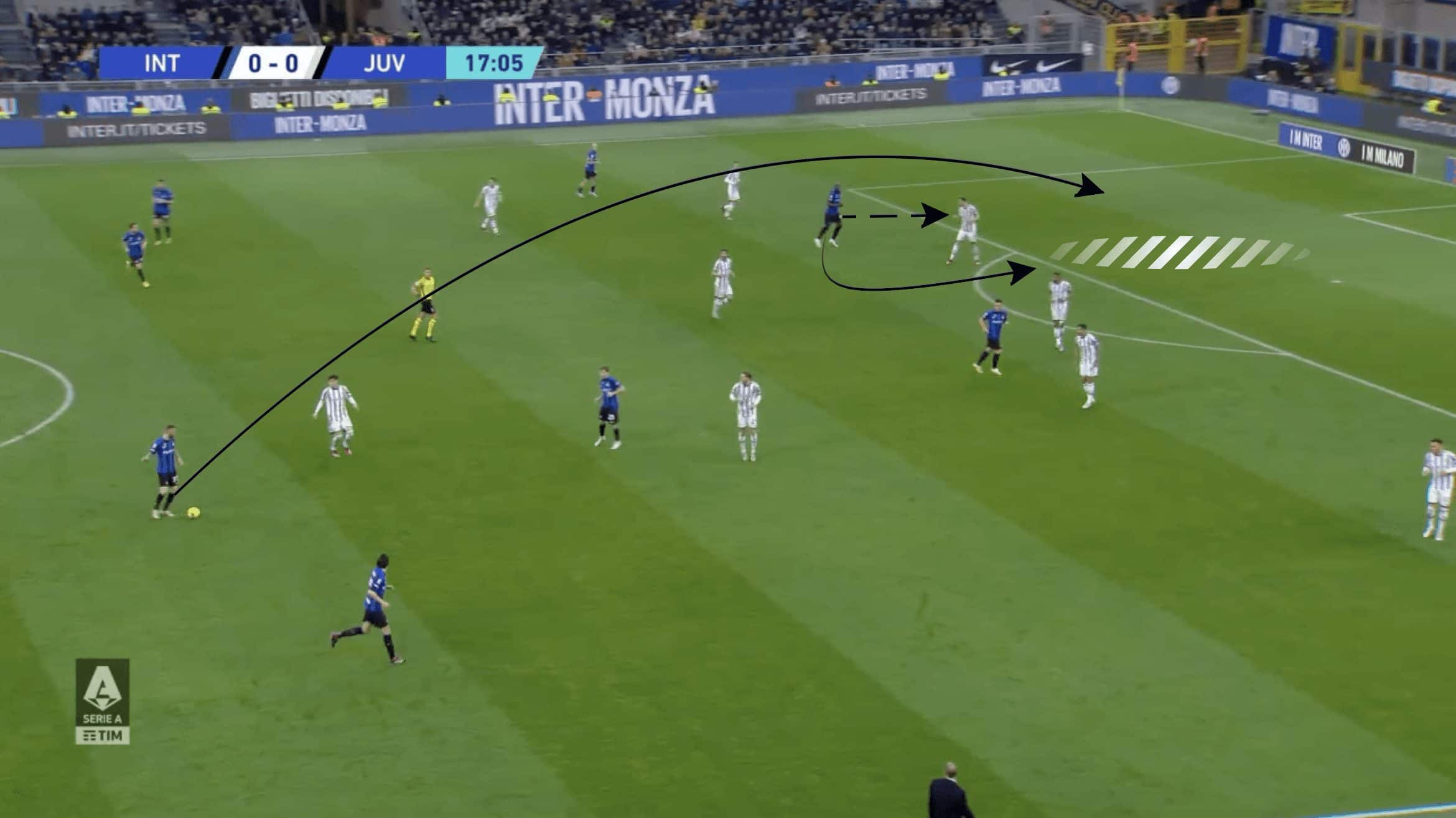
Here again, we see Lukaku in the same stance as in previous examples to receive the ball first and then look to bring other players into the game.
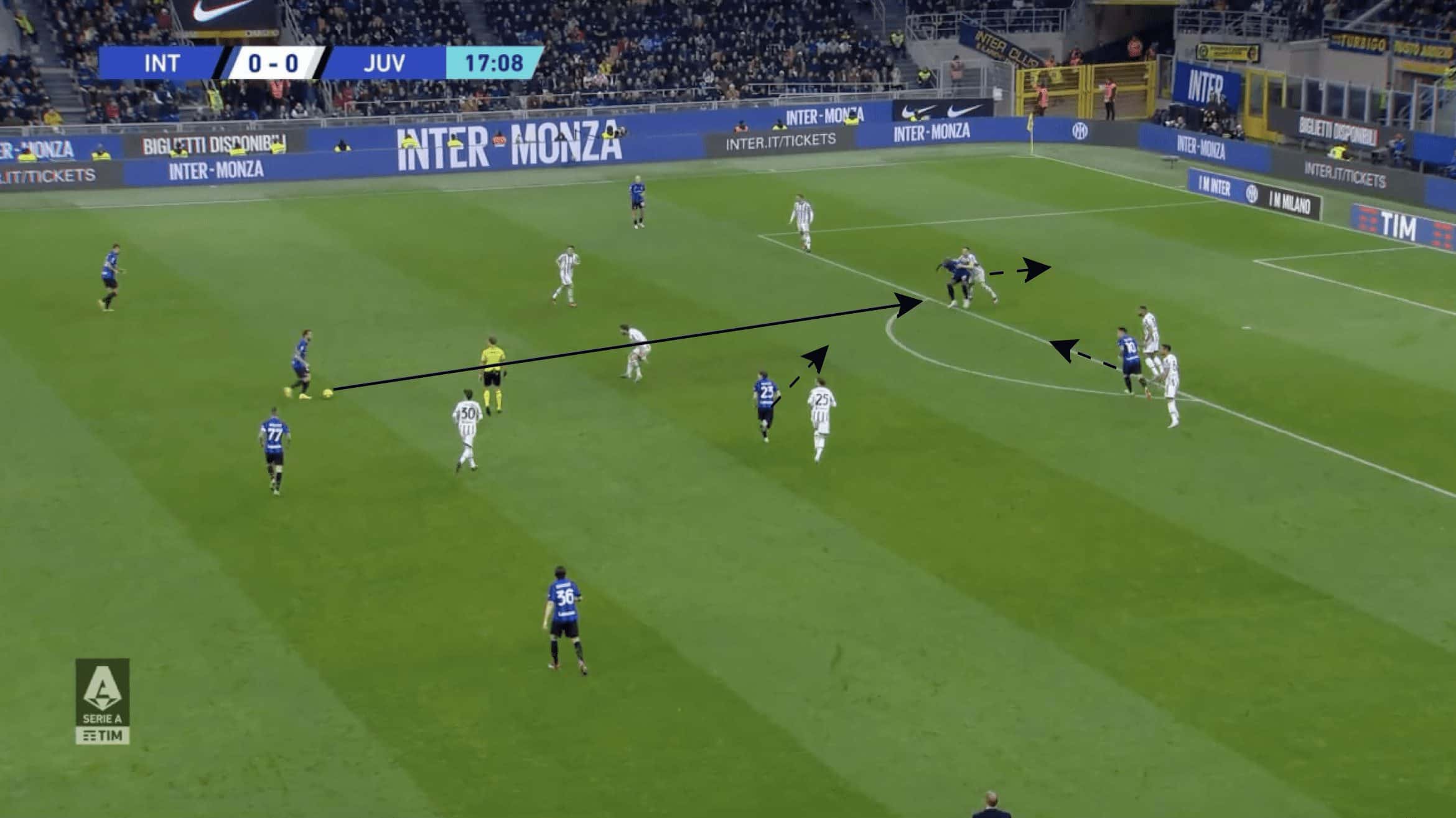
Although Lukaku has developed a method that allows him to use his physical attributes to maintain a controlled touch, the type of passes played to him have also contributed to this. Under both Inzaghi and Conte, the passes played to Lukaku have been driven on the ground or firm passes that are slightly elevated, allowing him to take advantage of his lowered centre of gravity.
This has aided Lukaku, particularly from a creativity perspective, with players running towards the spaces near the Belgian to receive lay-offs and general passes that lead to shots on goal.
How will Lukaku fit in at Roma?
At the start of this season, Roma have lined in a 5-3-2, giving them a perfect foundation to fit Lukaku into the current squad. There is a possibility that Lukaku and Paulo Dybala will be able to form a strong partnership at the top; however, with both players being left-footed, one of the two may need to be shifted to the right-hand side as can be seen in the image below, with Dybala positioned on the right-hand side.
However, suppose Dybala were to shift to the right-hand side. In that case, Dybala could likely still place himself close to Lukaku to benefit from lay-offs and combination play with the Belgian.
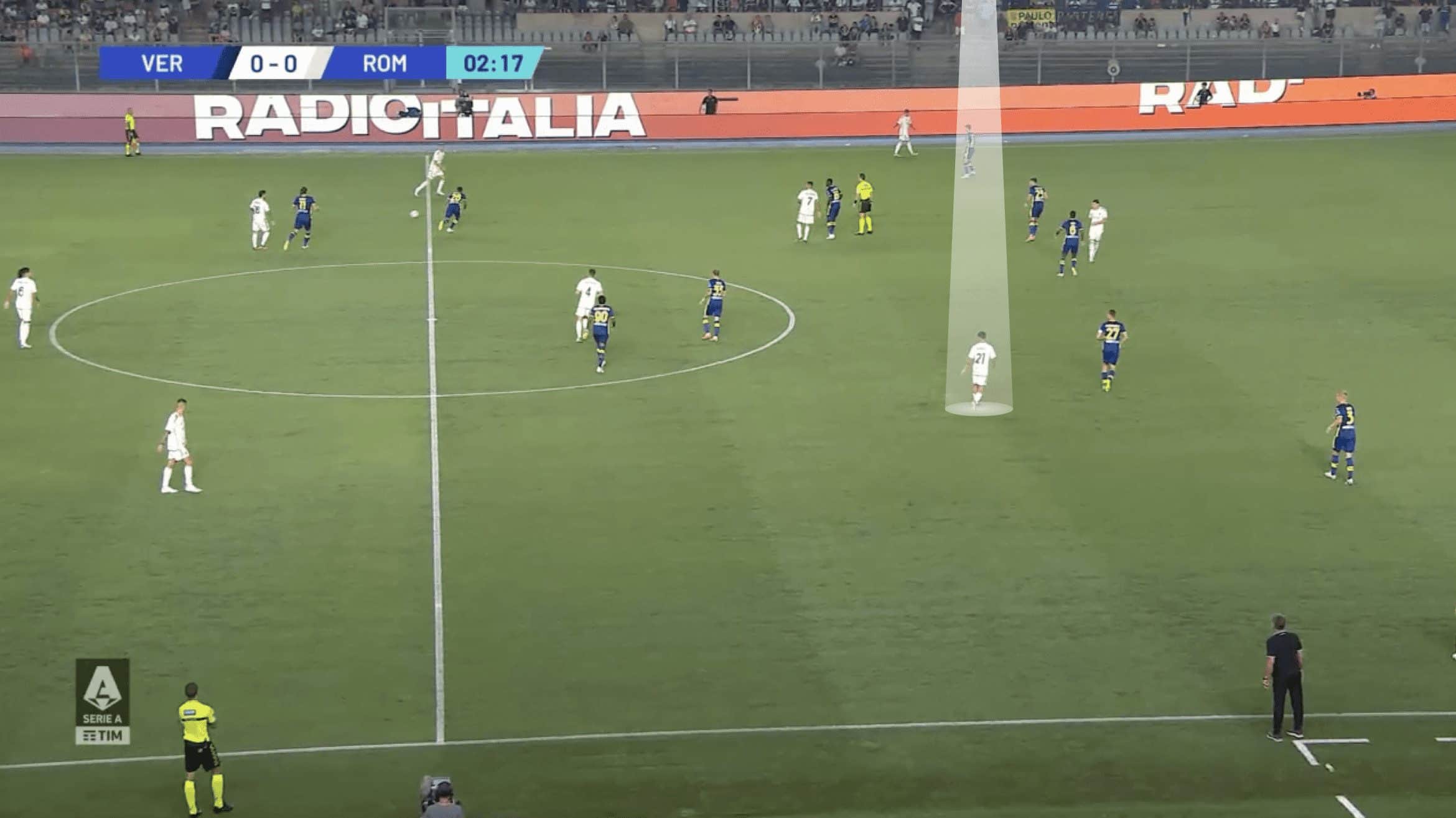
Lukaku also provides Roma with a different dynamic on the right-hand side compared to Dybala. As can be seen in the image below, with Gianluca Mancini on the ball, Dybala begins to drop slightly deeper in order to provide an option for Mancini.
As demonstrated in the previous example, Lukaku, in this situation, would be able to hold off and back up the defender, creating opportunities for players to run into the spaces left by the opposition.
As can be seen in the image below, Rasmus Kristensen keeps his position and does not make any movements towards the centre or down the touchline. One aspect Roma can take advantage of is Kristensen’s athleticism and strong running, combined with Lukaku’s ability to hold off defenders and hold up possession.
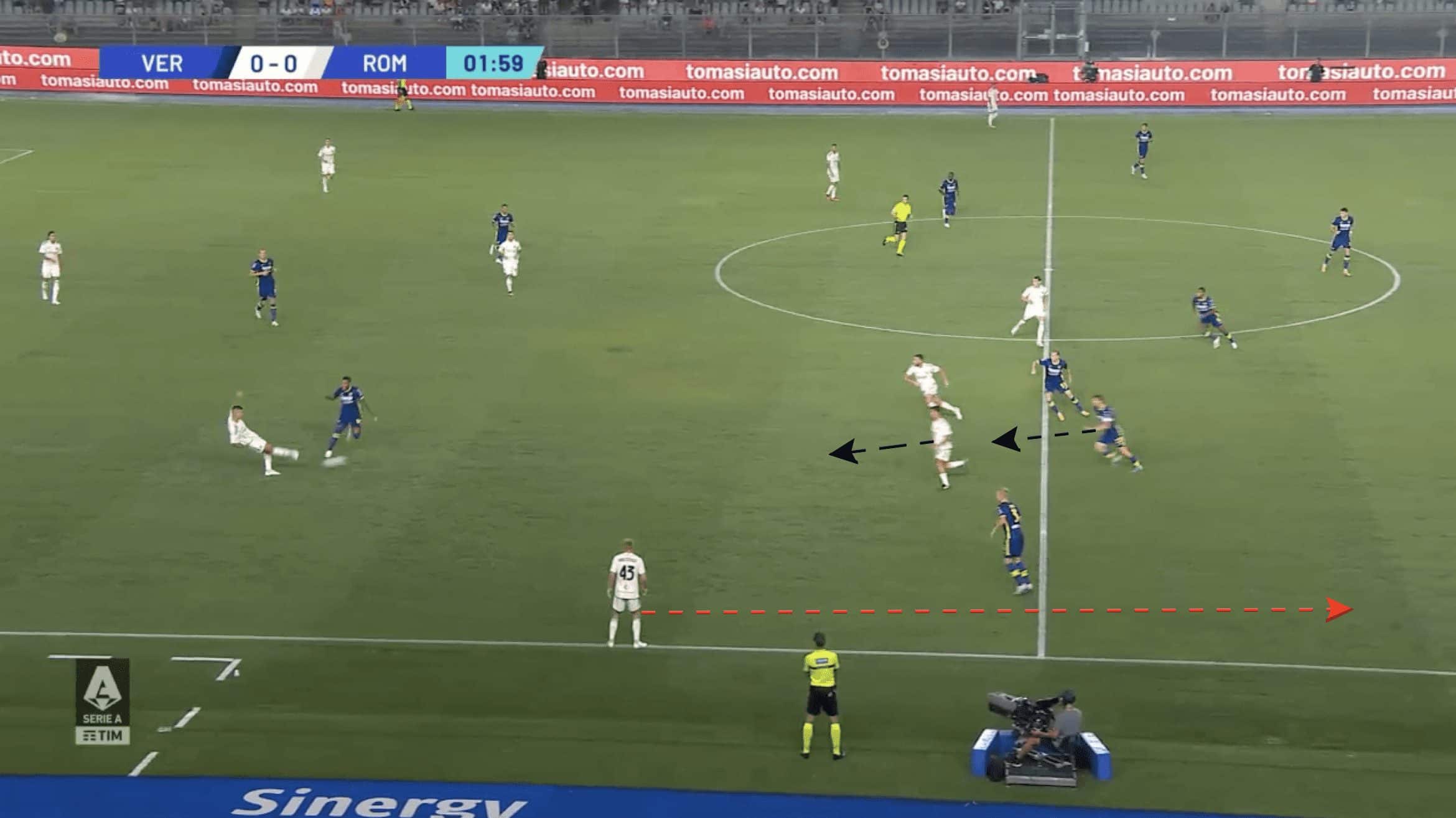
What will be essential for Roma is how they feed passes into the Belgian. It may be highly counter-productive if they look to solely play long lofted balls to the striker or just use him as a significant target in the opposition box. Due to the characteristics of his game and how he has developed, it may be optimal to use him as the fulcrum of the attack, with players looking to move towards him and occupy the spaces around him left by the opposition.
Conclusion
Romelu Lukaku’s reputation precedes him, with the striker having shown his abilities in the Premier League, Serie A and on the International stage. With his physical gifts, ability to move well in the box and striking ability, he poses many problems for opposition defences.
However, as this tactical analysis has shown, it is vital that he is utilised correctly in a manner that allows him to bring others into play as well as create opportunities for himself. Mourinho is likely to have to alter his tactics in possession slightly to get the most out of the Belgian.

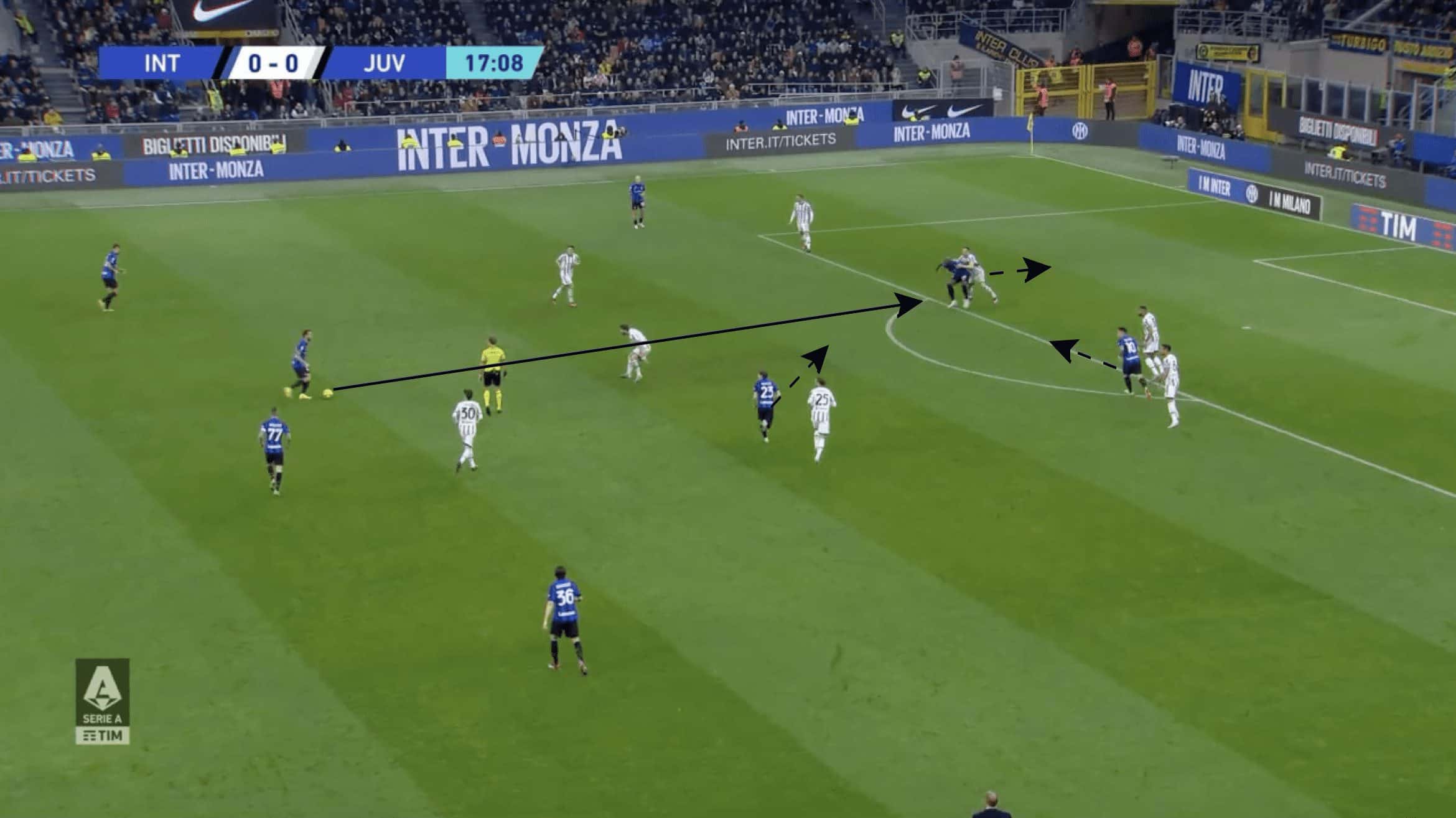



Comments